A joyous occasion in difficult times | OCTOBER 23
In a year marred by numerous alarming anti-Jewish measures, the wedding of Frieda Ascher and Bernhard Rosenberg on October 23rd in Berlin must have provided a much needed reprieve for their families and friends. The officiant at the ceremony was Dr. Moritz Freier, an orthodox rabbi. Many young Jews, unable to find work as a result of the intensification of antisemitism in Germany, approached Rabbi Freier since his wife Recha had already come up with the idea of helping Jewish youth to immigrate to Mandatory Palestine and settle in Kibbutzim, a project known as “Youth Aliyah,” in January 1933.
Rose Luria Halprin Celebrates her Birthday | APRIL 11
As a leading functionary in various Zionist organizations, most notably the Hadassah Women’s Zionist Organization of North America, Rose Luria Halprin had moved to Jerusalem in 1934, where she worked as the liaison between the local Hadassah branch and the National Office in the US. Having befriended Henrietta Szold, who led the Youth Aliyah in Palestine, Halprin, too, became involved in efforts to rescue German-Jewish youth by bringing them to Palestine. The Youth Aliyah had been founded by the prescient Recha Freier, wife of a Berlin-based rabbi, on the very day the Nazis were voted into government, January 30, 1933. In the years 1935 to 1938, Halprin repeatedly visited Berlin. April 11, 1938 was her 42nd birthday.
Denaturalized | MARCH 26
The passage in July 1933 of a law allowing the government to revoke the citizenship of those naturalized after the end of WWI had given Nazi officials a tool to deprive “undesirables” of their citizenship. The law targeted the Nazis’ political adversaries as well as Jews; 16,000 Eastern European Jews had gained German citizenship between the proclamation of the republic on November 9, 1918 and the Nazi rise to power in January 1933. Among those whose names appear on the expatriation list dated March 26, 1938 are Otto Wilhelm, his wife Katharina and the couple’s three children, residents of Worms and all five of them natives of Germany.
Vacation from the threat | JANUARY 31
Although one could imagine 1938 as a very gloomy and tense year for German Jews, some events, such as vacations, bore a semblance of normalcy. In this postcard from a trip to the “sunny South,” no political thunderclouds appear on the horizon. The writer tells the recipient in Frankfurt, Rosel Lehrberger, about an afternoon dance at the Palais de la Jetée in Nice, an elegant Moorish Revival casino from the Belle Epoque, which for decades was a tourist magnet.
No Reward for Patriotism | JANUARY 30
The C.V.-Zeitung, Paper for German and Jewish Culture was the organ of the “Central Association of German Citizens of Jewish Faith.” The Central Association’s political bent was liberal-conservative and it strove to represent the interests of all Jews, regardless of religious affiliation. The newspaper aimed to raise the self-confidence of German Jews as well as to deepen their love of “both German and Jewish culture.” (Jüdisches Lexikon 1927). January 30, 1938 was the last day of ordinary operations for the C.V.-Zeitung. On the 31st, the Nazis ordered its temporary suspension until February 24 with no reason given.
Religion, culture and the struggle for human dignity | JANUARY 29
This drawing shows the interior of the Prinzregentenstraße Synagogue in Berlin (Wilmersdorf). Built in 1930, the building was designed to fulfill the needs of a liberal congregation. As shown in the picture, the synagogue boasted a magnificent organ. Rabbi Leo Baeck gave the sermon at the opening ceremony. From 1933, when Jews began to be pushed out of Germany’s cultural life, the synagogue also became a Jewish cultural center.
Stopover in Venice | JANUARY 28
When Julius Ostberg visited Palestine in January 1938, his daughter Ilse had been living in the country for four years. She was born in 1912 and spent her first 22 years in Essen. After emigrating from Germany to Palestine in 1934, she, like many other German Jewish emigrants to Palestine, continued to visit Europe in the following years. The photos shown here were taken in 1937 during a stopover in Venice on the way back to Palestine.
No hope in the East | JANUARY 27
As the situation of Jews in Nazi Germany deteriorated from day to day, the anti-Semitic atmosphere in other countries became increasingly tense. In neighboring Poland, anti-Semitic voices became louder and louder. As the C.V.-Zeitung, the organ of the Central Association of German Citizens of Jewish Faith, reported, the Lower House of the Polish Parliament expressed its anti-Jewish sentiments in the form of a plan to remove Jews from the country: it called for the emigration of at least 100,000 Jews annually. Besides Palestine, Madagascar was discussed as a possible destination. The case of Polish Prime Minister Sławoj Składkowski shows how widely antisemitism was accepted: commenting on the “unpleasant events” (presumably, the numerous cases of physical violence against Jews), he claimed that Jews themselves were to blame, due to their lack of understanding of Polish peasantry, which, just as the Jews themselves, was striving for a higher standard of living.
A forced move | JANUARY 26
There are many ways to describe Leo Perutz: novelist, mathematician, native of Prague, chess lover—to name but a few. He was admired by his colleagues and millions of readers. His success as a writer was so great that he decided in 1923 to give up his bread-and-butter job as an actuary. The Great Depression hit him hard, since the crisis not only negatively impacted the bookselling trade but also rendered the family company, in which he had a share, less profitable. To make matters worse, after the Nazis’ rise to power, his Jewish publisher, Paul Szolnay, lost his largest market in Germany. This is one of the last photographs taken before Perutz’s emigration from Vienna to Tel Aviv, Palestine in 1938.
Karl Adler’s 48th Birthday | JANUARY 25
Born in Buttenhausen, Wuerttemberg on January 25, 1890, Karl Adler studied music at the Stuttgart Conservatory, where he became Director in 1921. He was a cofounder of the Verein zur Förderung der Volksbildung, an adult-education organization, and director of its music department. In 1926, he was among the leading forces that built the Jüdisches Lehrhaus Stuttgart. After his dismissal from his position at the conservatory in 1933, he initiated and directed the Stuttgarter Jüdische Kunstgemeinschaft, a branch of the Kulturbund. In 1935, he became the head of the music department of the Mittelstelle für jüdische Erwachsenenbildung, a division of the Reichsvertretung der Juden in Deutschland dealing with adult education.
The Fifth Column | JANUARY 24
In the 78th and last year of its existence, the orthodox weekly Der Israelit reports on measures of the anti-semitic, pro-German Goga-Cuza government in Romania: The country’s Jews were subjected to various chicaneries and occupational bans similar to those in Germany. As a result of gains in territory and population in WWI, about 30% of Romanians belonged to minority groups, who were seen as a “Fifth Column.” Jews especially were the object of fears and suspicions which easily turned into violent hatred.
The American dream | JANUARY 23
As the number of Jewish emigrants from Germany was constantly growing, so was the number of letters exchanged between friends and relatives who had already left and those who stayed behind. In his handwritten letter from January 23, Mikloś Ehrenfeld suggests to his friend Kunibert in Berlin that it would be a good idea for him to leave Germany in spite of his good position and come to America, as Ehrenfeld himself did. Self-actualization and the fulfillment of personal dreams, Ehrenfeld wrote, were possible in America but hopeless in Germany.
Victory of the underdog | JANUARY 22
With Adolphe Adam’s comic opera “If I were King” and Ladislaus Bus-Fekete’s “Cape of Good Hope,” the Berlin Kulturbund offered its guests lighthearted distractions. The Jewish audience in Berlin in 1938 must have been receptive to an opera in which the powerless but honest hero wins and the bad guy gets his well-deserved punishment.
Counting refugees | JANUARY 21
After the Nazis’ rise to power, the economic historian and journalist Kurt Zielenziger fled to Amsterdam with his wife and son. There he co-founded the “Jewish Central Information Office,” the goal of which was to document the persecution of Jews by the Nazis and to spread the information. In this release, the Jewish Telegraphic Agency quotes his computation of Jewish emigrants from Germany according to destination countries. According to Zielenziger, by the end of 1937, a total of 135,000 Jews had left the country.
The “Harrods of Berlin” | JANUARY 20
This picture-postcard shows Berlin’s oldest and for some time largest department store, named after the founder of the business, Nathan Israel. The Israel family had taken up residence in Berlin in the 18th century. The business was last located at 28 Spandauer Straße, across from the Rotes Rathaus (“Red City Hall”). Under its last director, Wilfrid Israel, the department store distinguished itself by providing uncommonly generous benefits to its employees, such as health and social insurance.
Markus becomes Mischa | JANUARY 19
Markus Wolf (center in the photo above), one of the sons of the communist physician and writer Friedrich Wolf (right), was born in 1923 in Hechingen in the Swabian Alps. After the Nazi seizure of power the family initially emigrated to Switzerland, then to France, and in 1934 to the Soviet Union. The Wolf family resided at the Hotel Lux in Moscow where a large number of communist refugees from Germany had been given shelter. During the years of the Great Terror (1936–38), deeply suspicious of the foreigners, in whom it saw potential spies for the Reich, Stalin’s regime tortured and interrogated many of the German emigrants. Among the approximately 600,000 victims of the purge were 178 German communists, most of them residents of the Hotel Lux. The Wolf family survived.
Nowhere safe to go | JANUARY 18
When German Jews considered the various emigration options in January 1938, Palestine might have seemed a dangerous destination. As the Jüdische Rundschau reported, in the same month, attacks against Jewish inhabitants and clashes between Jews and Arabs occurred in numerous places in Palestine. Apart from local resistance, the paper mentioned Syrian terrorists, the smuggling of weapons from Libya, and the refusal of the Egyptian government to conduct direct Arab-Jewish negotiations. In light of these facts, emigrating to Palestine could appear to the prospective emigrants like jumping from the frying pan into the fire rather than finding a safe refuge.
Mixed marriage by special permit | JANUARY 17
An unidentified author congratulates the German mountain climber and physicist Hermann Hoerlin, based in Stuttgart, on his upcoming wedding with Käthe Schmid, who was considered a “Half-Jew” in Nazi parlance. The “Law for the Protection of German Blood and German Honor,” adopted in 1935, forbade marriages between Jews and non-Jews. Despite the law, the couple Hoerlin-Schmid obtained a special permit and the wedding could go ahead.
The noose tightens | JANUARY 16
The “Reichsvertretung der Deutschen Juden” (Reich Representation of German Jews) was established in Berlin in September 1933 as an advocacy group. After the passing of the Nuremberg Laws, it had to change its name to “Reichsvertretung der Juden in Deutschland” (Reich Representation of Jews in Germany). Its president was Rabbi Leo Baeck. As a result of the increasing pauperization of the Jewish population, whose possibilities to earn a living were systematically taken away, the Reichsvertretung appealed to the government in January 1938 to desist from additional limitations depriving Jewish professionals of their jobs. The Reichsvertretung argued that not only was the increasing unemployment a burden on the welfare system, but it also made emigration impossible.
Suited up | JANUARY 15
Julius Ostberg was the owner of a uniform and coat factory in Essen. In January 1938, he visited his daughter Ilse in Palestine. Similar to other German Jews in Palestine, Ostberg did not think about giving up his outfit – associated among German Jews with correctness and good taste and often ridiculed by Jews of other nationalities. In this picture, taken on the beach, despite the casual environment, Mr. Ostberg presents himself in formal attire consisting of a suit and a tie.
Staged normalcy | JANUARY 14
The January issue of the Berlin Kulturbund magazine conveys a sense of normalcy—local businesses advertise merchandise and services like cosmetics, women’s apparel and car repairs, while the Kulturbund schedule offers Eugene Scribe’s “The Ladies’ Battle.” The comedy must have provided a welcome respite from the worrisome situation.
Advice from New York | JANUARY 13
A representative of the New York office of Intria International Trade & Investment Agency Ltd., London, advises a client in New York to use the “Haavaramark” for “transfers to persons of Jewish descent residing in Germany.” The Haavara (transfer) Agreement had been made between Zionist representatives and the Nazis in 1933. It enabled emigrants to deposit money in a German account, which was used to pay for the import of German goods to Palestine. The proceeds from the sales of these goods in Palestine, after the deduction of costs, was disbursed to the new immigrants.
An arbitrary ordeal | JANUARY 12
Herbert Freeman was born Herbert Friedmann on December 13, 1925 in Frankfurt/Main, Germany. His father, Leo Friedmann, immigrated to the United States first. Herbert, his mother, and his brother applied for a US visa in Stuttgart. During the obligatory health check-up, the perfectly healthy Herbert was diagnosed as a “tuberculosis carrier” and was unable to join his mother and brother on their journey to the United States in 1936. After repeated unsuccessful attempts, in order to circumvent the Stuttgart US Consulate, 12-year-old Herbert was sent to Zurich (permission to file an application outside Germany was obtained in no small part thanks to the intervention of Albert Einstein). The letter was written during Herbert’s stay in Switzerland. He mentions his upcoming visit to the US Consulate and reapplying for the visa, and describes his days while separated from his relatives.
“Who won’t betray us in the end?” | JANUARY 11
As German Jews were getting arrested or being forced to leave the country, the performances put on by the local branches of the Jewish Kulturbund (Culture Association) were among the few places of refuge where Jews could enjoy culture as in earlier days. Among other things, in the winter season of 1937/1938 the Jüdischer Kulturbund Berlin performed Tchaikovsky’s Eugene Onegin (Director: Dr. Kurt Singer) and Scribe’s The Ladies’ Battle (Director: Fritz Wisten). Since 1935, the Kulturbund’s venue had been the theater at 57 Kommandantenstrasse, the former Herrnfeld Theater, where popular Jewish plays had once been staged.
One-way ticket | JANUARY 10
If advertisements in newspapers reflect the main needs of society, then the Berlin Jüdisches Gemeindeblatt (Jewish Community Paper) from January 1938 can serve as a perfect example of such needs in times of crisis. By January 1938, when the majority of German Jews were preparing for emigration or actively looking for ways to leave the country, advertisements for travel agencies and shipping companies dominated the commercial space of the newspaper. The main destinations of German-Jewish emigrants were Palestine as well as North- and South America.
Where strength and joy flow | JANUARY 9
In his opening speech at the inauguration ceremony for the new Jewish community center in Hamburg, Max M. Warburg, scion of a renowned family of bankers, describes the challenges the community is facing at the present moment and states the mission of the building and its leadership in troubled times. Describing theater as a source not only of “uplift and joy” but also of “moral fortitude,” Warburg declares the community center to be intended first and foremost as a home for the performances of actors and musicians of the Jewish Kulturbund.
Doing fine under the circumstances | JANUARY 8
Preparing for emigration to the United States, Alfred Rahn sold the family business, the M.S. Farrnbacher Ironmongery, in November 1937 without the consent of the Nazi authorities. Instead of leaving for the US at the end of December as planned, he therefore had to serve a 14 month prison term. From his prison cell in Fürth, Alfred Rahn expresses gratitude to his wife for gifts already received and asks for further necessities. His wife Lilly was a literary scholar and the last Jewish doctoral student to have graduated from the University of Erlangen (in 1934).
Improvisation impinged | JANUARY 7
Werner Wilhelm Dambitsch was born on June 23, 1913 in Breslau (today Wroclaw, Poland). Werner was interested in music from an early age, but he had to purchase his first instrument, a saxophone, with money he had earned himself. He did this in 1932 at the age of 19 and founded with four friends the ‘Excentric [sic] Jazz Orchester’. In order to perform, the combo had to join the “Reichsverband der jüdischen Kulturbünde in Deutschland” (Reich Association of Jewish Cultural Federations) and was forced to change the name to “Erstes Jüdisches Jazz-Orchester” (First Jewish Jazz Orchestra). While the association did not guarantee steady income or employment, at least it allowed the artists to perform at events attended by Jewish audiences. This image shows Werner Dambitsch’s Kulturbund membership card.
“A quiet light in the dark night” | JANUARY 6
Sometimes the dark events were even reflected in the tone of birthday greetings. Fritz Schürmann, a Jewish teenager from Hildesheim, and Gerhard Loeffler, a Protestant from Dresden, had been good friends for years. On the occasion of Fritz’s 18th birthday, Gerhard wished him safety, solace, and strength. Untypically for people of so young an age, the friend tries to convince Fritz of the necessity of hard experiences in the life of every human being.
Crisis management | JANUARY 5
On January 5, 1938, Kuno Fleischer wrote to the shareholders of his family’s paper factory in the small Baden-Wurttemberg town of Eislingen about a recent business dispute and alluded darkly to a time when “grave decisions will have to be made swiftly.” He told his fellow owners—his brother and nephews—that he would soon travel to the United States to “orient himself” adding, “No one of us can predict how things will turn out, and no one can take offense at our holding on for as long as possible to what we have built together.”
Unexpected allies | JANUARY 4
While the Methodists constituted a minority in Germany, they were a major denomination in the English-speaking world. The Nazis began wooing Methodist leaders in Germany as early as 1933, hoping to use them to propagandize fellow Methodists in the United States. German Methodist leaders became willing tools of the Nazis; not only did Methodist bishops avoid criticizing the regime, they explicitly praised what they saw as its successes. Against this background, it is all the more remarkable that the US National Methodist Students Conference adopted a resolution in which it condemned the antisemitic policies of Nazi Germany.



